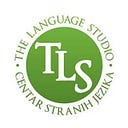Newsletter 008
Back to School 1/3: The Past, Present, and Future Walk Into a Bar…
… It was tense.
Sorry about the bad joke, but, hey, we gotta kick off the grammar series somehow!
Now, this might sound a bit pretentious, but we are going to try and change the way you were taught grammar in school(s). Not everything, though, just the tenses. And the aspects. For now.
First and foremost — we need to make a distinction between the tenses and the aspects. This division is going to be a loose one, simply for the sake of understanding, as the actual division is somewhat different.
There are two aspects:
- the simple (perfect; svršeni vid); and,
- the continuous (imperfect; nesvršeni vid).
The simple aspect means that something was/is/will be done. For example:
- Sarah ate an apple. (She did it in the past, it was done, completed.)
- Sarah reads books. (She does it regularly, it is done, completed.)
- Sarah will watch a movie. (She will do it, it will be done, completed.)
The continuous aspect means that something was/is/will be in the process of doing/being done. For example:
- Sarah was eating an apple. (She spent time doing it.)
- Sarah is reading a book. (Just now; or these days — her current habit.)
- Sarah will be watching a movie. (She will spend time doing it.)
If we compare these sentences, we can notice that the continuous aspect is NOT focusing on an action being done, but on THE TIME or THE MOMENT that was/is/will be spent on doing an action.
We don’t know if Sarah actually ever finished doing those continuous actions — but that’s not important in the sentences, it’s not our focus.
We intentionally use the continuous aspect when we want to focus on the time during which an action occured (not focusing on the result), or the simple when we want to focus on the completion of an action (focusing on the result).
You may have noticed that the examples above were given in only three tenses:
- the past simple/continuous;
- the present simple/continuous;
- the future simple/continuous.
That is because there are only three tenses, as each of them has two variants (aspects). Check out these timelines:
This timeline shows how we should perceive time in English — as three separate points with space in between.
When we talk about past simple/continuous, there is no connection with the present. Whether Sarah was eating an apple or she ate it, to us it makes little difference. She is not eating it anymore, and the speaker will choose to tell us if the action was completed or not.
The same goes for the future simple/continuous — the only difference is the focus on an action that will be completed or on the time that will be spent on doing it. Again, to us, it makes little difference if Sarah will finish watching the movie or simply spend time doing it.
The present simple/continuous comparison is different from the previous two, but there are still some similarities.
On the one hand, the present continuous is the tense that we use when we want to talk about ONE action (without repetition) that is happening at the moment of speaking, or it is happening around the present moment.
- I am reading this Newsletter — something that is happening now and will finish soon.
- I am working remotely — we are now, have been for some time, and will continue to work remotely until this pandemic is done (it might take several months, but we will not indefinitely work remotely).
On the other hand, the present simple is the tense that we use when we talk about actions that repeat themselves, or when they are not time-limited (states or situations that last permanently).
- I read these Newsletters once a week— tells us about a repetitive habit.
- I work from my hub — an action/situation that is always like that (regardless of the fact that we are currently working remotely, which is why, in our case, we say: I am working remotely and not I work remotely).
However, if you don’t normally work from your hub, you will say I work remotely because that is the action/situation that is normal for you always, and not just in this period.
Phew! This one was a tough cookie, right?
But do not despair, because this whole thing is a process during which you will learn to trust yourself not because you feel why you should use a certain tense, but because you know why, which is, after all, the ultimate goal — not to worry about the grammar, but to implement it in the most logical of ways: Your way. Or the highway, I guess.
Now, did someone say exercise!?
Here are some links to help you with this Grammaletter:
- Past Simple vs. Past Continuous (plus this one)
- Future Simple vs. Future Continuous (the links in red)
- Present Simple vs. Present Continuous (the first three links)
Next week, we are going to cover the second part of this analysis, and here’s a little spoiler: perfect tenses (present/past/future perfect) are not actually tenses — they are aspects! You have been lied to all along!
Practice makes perfect is the evergreen motto, so do take some time and cover the tasks from the links above.
Until next week, take care!
